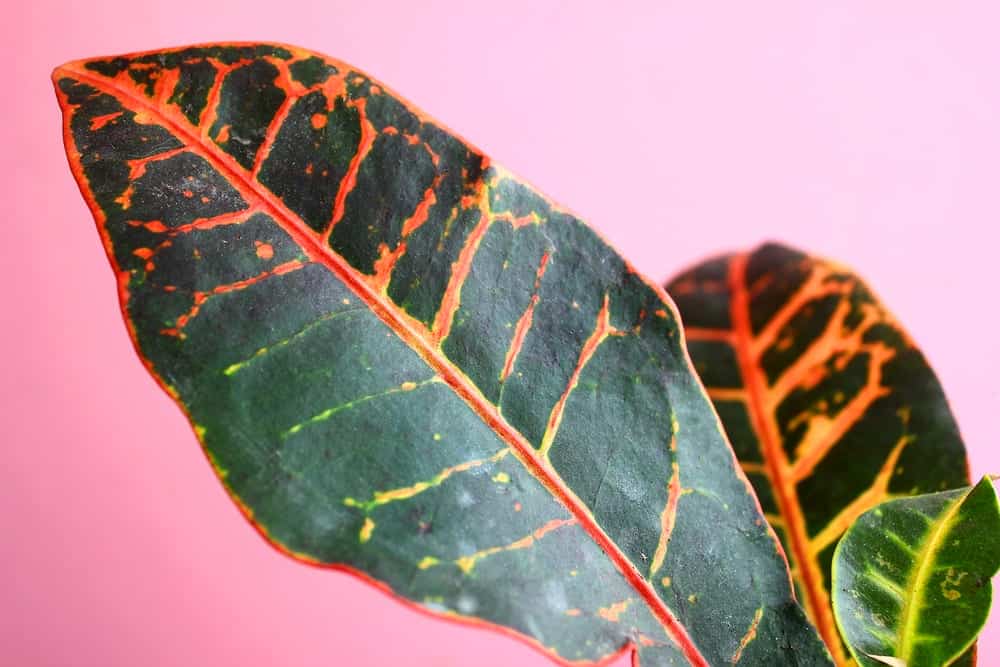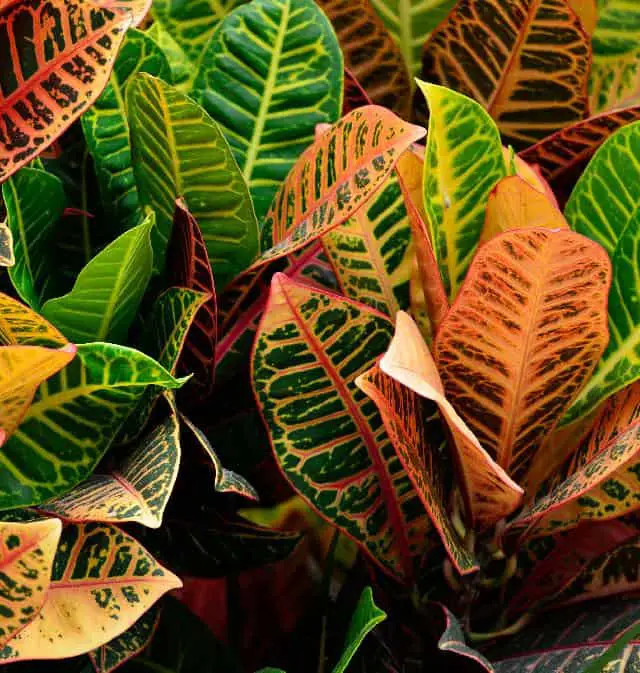Croton plants provide your indoor space with vivid, lively, and pretty colors of your prized plants.
But they can prove daunting for new gardeners, especially when their leaves start falling off without your leave.
Let me help you get to know your croton plant and equip you with knowledge on how to provide them with the best care. Now, read on to find out why croton leaves fall off.
Why are Croton leaves falling off?
Croton leaves may fall off due to over-watering or underwatering, exposure to cold temperatures, sudden changes in lighting, pest or disease infestation, or as a natural part of the plant’s growth cycle.
However, keeping it in a moist stable tropical environment with little movement or none at all is the key for it to thrive. Now that we know that croton plants don’t like changes and get stressed out when this happens, keep reading and dive in for more care tips to prevent it from shedding leaves due to stress.
Because of the croton plants’ aversion to change, the trip from the nursery to your house can be pretty stressful for your new plant. Hence, a newly purchased croton plant’s leaves may fall off a few days after they arrived in your garden.
Don’t fret. This is a normal reaction because a change in location triggers stress for your lovely croton. Knowledge of its proper plant care will enable you to nurture your plant as it readjusts to your home.
Let us reveal the best plant care tips and optimal environmental conditions for your croton plants to successfully thrive.
What is the best soil for my Croton plant?
Let us talk about its soil requirements. Your croton plant loves a well-draining, moist soil that is not waterlogged and soggy. Use a potting mixture rich in humus because it provides it with adequate moisture, but it doesn’t let your plant sit on the water.
As gardeners, we all know that a plant sitting in soggy soil results in root rot, killing it in eventuality. Soil with poor drainage can also contribute to your croton plants’ falling leaves. Adding pumice stones or grow rocks to your soil can improve the drainage and overall aeration of the plants’ roots.
What pot size should I get for my Croton plant?
Now, let us divulge the best pot size for your croton plant.
The container’s drainage holes are essential to keeping your croton plant healthy because, as previously mentioned, their roots don’t like to sit on soaking and soggy soil.
This is why you need to get a pot that is 1/3 larger than your plant’s root ball size. Moreover, it is best advised to re-pot it in a larger container every two years in the springtime. Doing this prevents the roots from being pot-bound.
How much sunlight does my Croton plant need?
Croton plant loves a tropical paradise and would thrive under 6 to 8 hours of bright sunlight.
The best advice is to give it 2 to 3 hours of direct morning sunlight.
Prevent sun exposure during the harshest midday sun as this could scorch or burn the leaves. A telltale sign that your croton plant has been exposed to excessively hot sunlight is gray patches on the leaves.
Contrarywise this, insufficient sunlight stresses the plant, which again causes its leaves to fall off. It also triggers the plant to lose its bright and attractive colors. Therefore, in the long run, it just fades to a lackluster green
So take note, bright sunlight but avoid the punishing midday sun that burns between 12 pm to 3 pm. Croton plants are easily stressed out and drop their leaves like it’s hot. Thus, let us find out the best temperature for them.
What is the most conducive temperature for my Croton plant?
We have now established that when it comes to your croton plant, consistency is the key.
Their life depends on this. Hence, they thrive on consistent temperatures between 60-85 Fahrenheit (16 to 30 in Celsius). This is an indoor temperature that is easily achieved, but it has to be consistent as previously indicated.
Avoid extreme temperature fluctuations that will not shock your croton plant. Keep it away from doors, windows, cooling or heating vents, ventilation fans, or drafts.
What should be the humidity level of the environment for my Croton plant?
Your croton plant grows in a tropical climate. It asks for high humidity levels of 40 to 80; 70 is the optimal number.
Therefore, there are different ways to keep the high humidity that it craves.
-
Humidifier
This is a great option to increase the humidity level in your indoor space.
-
Humidity tray
A humidity tray is an alternative solution to increase the humidity level too.
To set this up, place some pebbles, stones, or rock on a shallow tray.
Fill that tray with water, and place the plant on top of the gravel. Make sure that water is not touching the bottom of your pot. Ensure that there is always water on the tray.
Now, let us consider the watering needs of your croton plant.
What is the watering need of my Croton plant?
When the top half-inch of the soil is dry to touch, it is time to water your croton plant.
Follow this watering schedule during the spring and summertime when it is the plant’s growing season.
During fall and winter, water it when the dryness of the topsoil reaches 1 inch. Hence, it would not need that much water during its dormancy period.
During your watering schedule, keep the soil moist, but not soggy. Use lukewarm water to avoid any shocks. Water it thoroughly and let the excess water pass through the drainage holes.
Care tips
Buy your croton plant during spring or summertime. This ensures that they will not experience extreme temperature fluctuations while they are readjusting to your home.
Also, clean the leaves periodically with a damp cloth to remove the accumulated dust and dirt on them. This also helps promote proper photosynthesis and lets the leaves shine.
Like with any plant, remove dead or dried-out leaves. Now that you have read about these care tips for your croton plant, let us find out the answers to these frequently asked questions.
Why are croton leaves turning yellow and falling off?
As we have established earlier, croton plants love consistency and hate changes.
Moreover, their leaves may turn yellow and start to fall off if they have been exposed to colder temperatures below 60 Fahrenheit.
Incorrect watering can also be the culprit here. So, avoid overwatering or underwatering your croton plant. This plant hates inconsistency.
Why can’t my Croton plants grow new leaves?
It may have recently experienced changes, so it is still adjusting.
Give it a few weeks of proper care and nourishment that we have iterated above. It should grow a new set of leaves in no time.
Why are my Croton plant’s leaves drying?
If you see that their leaves are drying out, this may be a result of underwatering.
Thus, follow the guideline provided above to correct the watering schedule of your croton plant. Remove the dried-out leaves to minimize the plant’s stress as it recovers.
Conclusively, your croton plant is opposed to any changes in its environment, so its normal stress reaction is to shed its leaves. This could be caused by changes of any kind in environmental conditions such as light, humidity, temperature, and even location.
It thrives on consistency and stable tropical with high humidity surroundings. Give it the best care and stability, and in return, it will give you fiery, vibrant, and colorful foliage for years to come.



